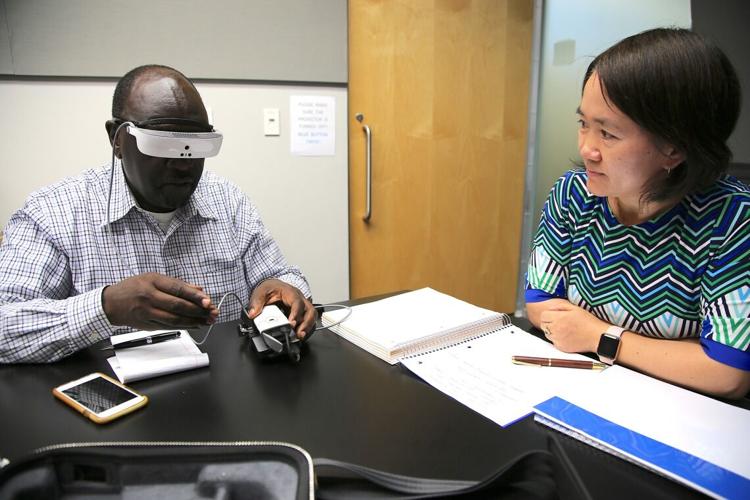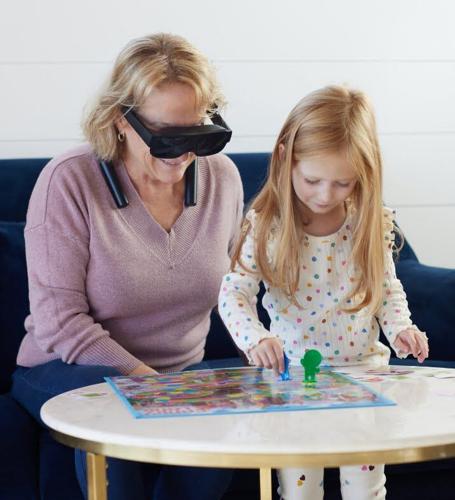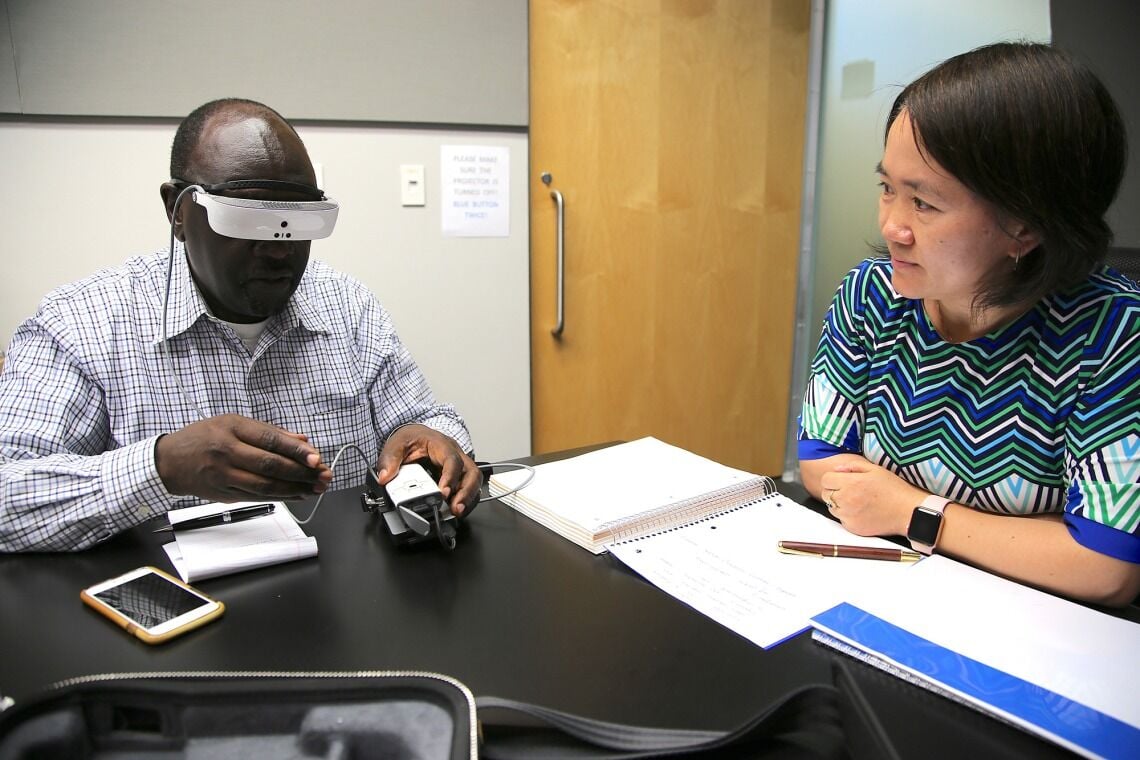A longtime University of Arizona optics professor has been honored along with other scientists who used federal funding to invent life-changing technology — in Hong Hua’s case, helping the nearly blind to see clearly.
Hua, director of the UA’s 3D Visualization and Imaging Systems laboratory, was featured in the Bayh-Dole Coalition’s 2024 “Faces of American Innovation” report for her invention of an optical device that uses virtual- and augmented-reality technology to allow those with significant vision loss to see with up to 20/20 vision.
Hua, one of five scientists honored with the second annual Bayh-Dole Coalition American Innovator Award, traveled to Washington D.C. to receive the award on Wednesday, Sept. 18.
The coalition, which includes the UA’s commercialization arm Tech Launch Arizona, is named for the landmark Bayh-Dole Act of 1980, a federal law that allowed universities, businesses and nonprofit organizations to own and profit from inventions created using federally funded research.
Hua said the award is more than a recognition of her past achievements.
“It indeed gives me inspiration for what I can do for people around me, for my community and for the society in large,” Hua said. “This special inspiration will keep me on the path of nurturing innovation among my students.”
Considered a pioneer in her field, Hua is inventor on multiple patents over a 20-year UA career, and the technology is used in eyewear marketed to low-vision patients since 2017.
“Dr. Hua’s technology has significantly improved the lives of people with vision loss — and could forever transform how we treat the condition,” said Joseph P. Allen, executive director of the Bayh-Dole Coalition.
Doug Hockstad, associate vice president of Tech Launch Arizona, called Hua “an incredible innovator focused on leveraging her expertise to create a better world.”
Other 2024 Bayh-Dole honorees included scientists who advanced technologies, including a vaccine for bovine respiratory disease, a system to filter impurities out of drugs, and a community-level system to purify water using ultraviolet light.
Hua, who joined the faculty of what is now the Wyant College of Optical Sciences in 2004, performed initial research under a National Science Foundation grant, which ultimately led to her creation of a compact, wearable eye-tracking device to allow late-stage ALS (Amyotrophic Lateral Sclerosis) patients to communicate simple messages.
Hua and former UA grad student Jason Khun developed optics that magnify images and project them onto a screen in front of each eye, providing more visual data to the brain and triggering an increased reaction from the eyes.
The technology was patented by the UA and attracted the attention of eSight Corp., a Canadian startup company that licensed the technology and funded further research. The company unveiled a prototype in 2013, and its first commercial product hit the market a few years later.
“These NSF-funded projects enabled me to develop the various capabilities and expertise in freeform optics and enabled the development of an assistive eyewear technology, through collaboration with eSight, which can give back eyesight to people with central vision loss,” Hua told the Star.
Hua said she continues her research on assistive eyewear, and studying problems with VR- and AR-assisted devices and the potentially negative and long-term effects on users of such technologies.
Now eSight’s sight-enhancing eyewear is in its fourth generation, and thousands of people with central vision loss from more than 20 different eye conditions — including macular degeneration and diabetic retinopathy — use the device every day, the Toronto-based company says.
The eSight 4, an FDA-approved Class 1 medical device also approved for use in Europe and Canada, features a small, high-speed, high-definition camera that captures everything in the user’s view. Users can adjust zoom and focus, and even save images for later viewing.
Clinically validated algorithms optimize and enhance the footage, which is displayed on an OLED monitor in front of each eye, in real time, the company says.
The company also offers the eSightGo, a slimmer version of the device worn like regular eyeglasses. The eSight 4 costs about $6,000 and the eSightGo is priced at about $5,000, with monthly rental options.
Meanwhile, eSight’s success has attracted a much larger player.
Gentex Corp., a major supplier of electro-optics like dimmable mirrors to the auto, aviation and fire-prevention industries based in Zeeland, Michigan, announced in January that it had acquired eSight.

The eSightGo sight-enhancing glasses are worn like regular glasses.
Though Gentex didn’t disclose details of the deal for eSight at the time, the company in financial filings in May reported that it paid $18.9 million in cash; assumed a $9.4 million promissory note in exchange for a 20% stake it previously held in the company; and agreed to potential earn-out payments of up to $70 million over the next 10 years based on revenues.
Biz-tech expo
The Arizona Technology Council and sponsor South32 will host the 12th Annual Southern Arizona Tech + Business Expo on Wednesday, Oct. 16, at the Tucson Convention Center.
The Tech Council expects more than 400 businesses and 65 exhibitors including transportation, automation, optics, biotech, mining, aerospace, defense, logistics, robotics, space exploration and information technology.
The event will include a panel on the future of mining and innovation, including Pat Risner, president of the South32 Hermosa Project.
South32, an Australian mining company, plans to mine for zinc, lead, silver and manganese at the company-owned Hermosa site in the Patagonia Mountains, about 75 miles southeast of Tucson.
The project is undergoing an environmental impact study the U.S. Forest Service expects to complete in mid-2026.
In May, the Hermosa project won a $20 million award from the U.S. Defense Department to help develop the first domestic source of manganese, a federally designated critical mineral used extensively in electric-vehicle batteries.
For more information about the Oct. 16 event, tickets or sponsorships, go to tucne.ws/expo24.
One of the biggest causes of eye strain is the daily use of devices such as phones, tablets, computers, and televisions. These devices can cause eye strain symptoms such as headaches, blurry vision, irritated, red or dry eyes.






